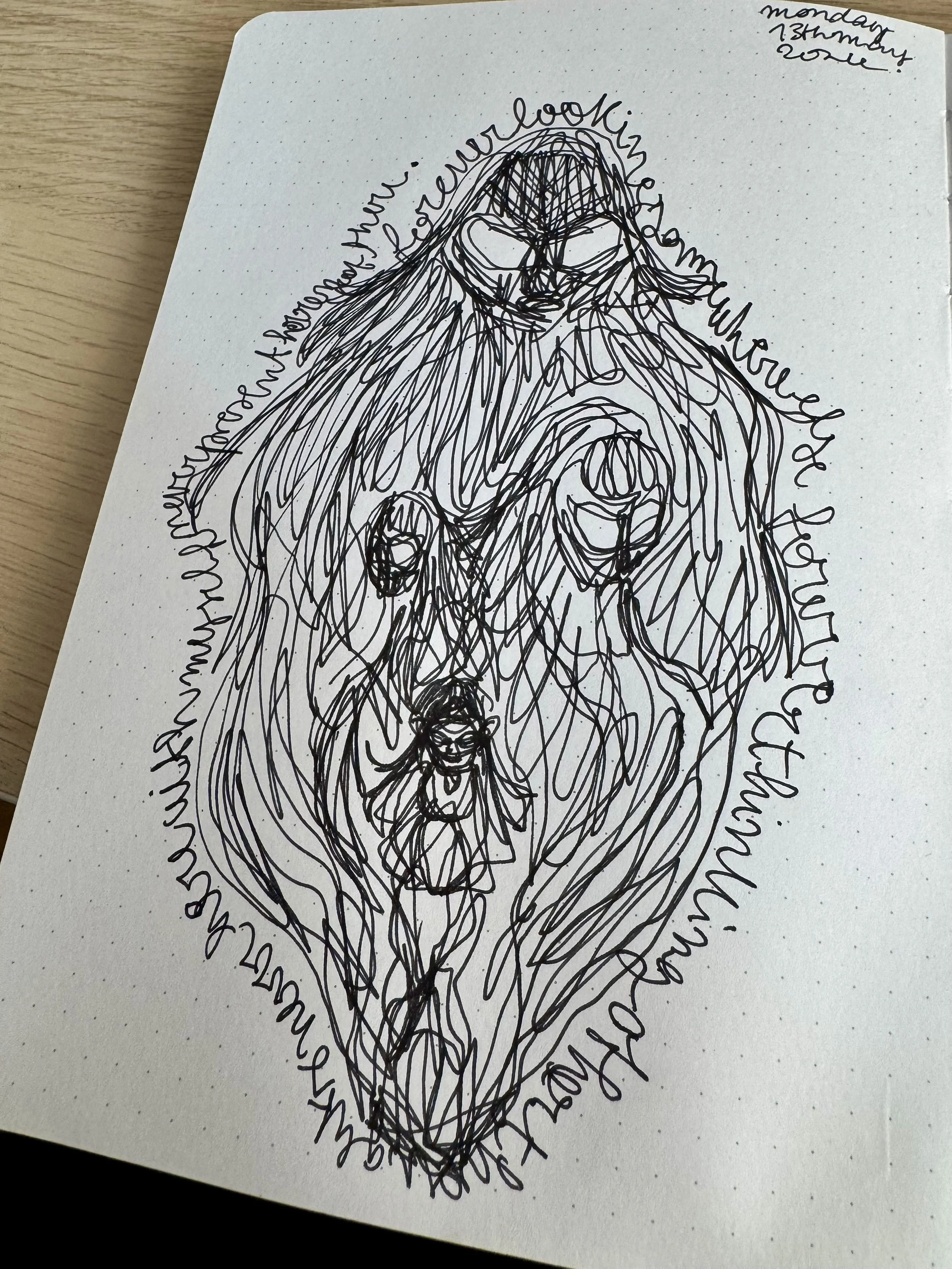When Your Scroll Feed Makes You Forget Who You Are as an Artist
Style FOMO, creative anxiety, and how to find your way back to yourself
It usually starts innocently: I’ve wrapped up work for the day, the kids are finally asleep, I’m sitting on the sofa with tea and my brain half-melted and I open Instagram.
There it is: a post by an artist I love. Their feed is cohesive, their prints are flying off shelves, their colour palette looks like a dream, and even their desk seems to sparkle with fairy dust.
And suddenly, something in my brain goes:
◆ “Should I draw more like that?”
◆ “Maybe I should pivot my whole vibe.”
◆ “Would I be happier if I ran my shop/Patreon like them?”
◆ “Why doesn’t my art feel that… magical?”
The funny part? Our work isn’t even that similar: different style, different themes, different audience. But still, my brain starts packing imaginary boxes to move into their lane.
That’s the “style anxiety” moment.
What’s really happening
We call it comparison, but it’s deeper than that: it’s identity FOMO.
Social media is a constant highlight reel of other artists’ fully formed aesthetics. It makes our own work-in-progress selves feel half-baked. Research calls it FoMO - the fear of missing out on rewarding experiences others are having (no, it’s not just a trendy acronym - there are actual studies about it).
For digital artists, this is multiplied by 100: our work is our identity online. When someone else’s style suddenly feels “right,” our brain doesn’t just admire it. It tries to merge with it.
Why neurodivergent brains might feel it harder
If you’re neurodivergent (ADHD, autistic, or otherwise wired a little differently), this kind of “style wobble” can hit harder.
Studies have shown that:
◆ People with ADHD often experience stronger emotional responses and anxiety loops, especially around identity and performance.
◆ ADHD and autistic folks tend to have heightened sensitivity to external feedback (likes, views, validation) and a deep need for coherence between what they make and how they’re perceived.
◆ Add creative pattern-seeking brains to the mix, and it’s easy to see why one gorgeous reel can send us spiralling into “maybe that’s who I should be.”
In other words: if your mind races through twelve possible rebrands before the kettle’s even boiled, it’s not a personal flaw: it’s literally how your brain processes stimulus.
My therapist’s advice (and what actually helps)
When I once explained this to my therapist, she told me:
“You don’t need to erase all those other ‘possible yous’. You just need to make the real one strong enough that the others quiet down.”
So now, when that FOMO surge hits, I pause. I literally put the phone down, look around, and connect back to something real - my kids’ warm little heads snuggled against me, the weight of the blanket, the sound of the kettle.
It’s a reset button. The reality check trumps the algorithm every time.
Then I breathe, and tell myself:
“You’re not allowed to rebrand your entire life because you saw a pretty post.”
An example of the kind of scribbles I do in my sketchbook whenever I have to remind myself who I am
How to ground yourself when “style FOMO” strikes
◆ Notice the pattern. When do you feel the pull most? (Usually when you’re tired, PMS-ing, or already uncertain about your work?)
◆ Pause the pivot. Admire that artist! Save the post! But no big changes for 24 hours.
◆ Revisit your “why.” What drew you to your own style? What stories do you want to tell?
◆ Make something small that feels like you. A doodle, a colour test, a texture. Anything that reminds you of why you like your way of making art.
◆ Stay in your lane, joyfully. You can admire others without trying to become them. You can be inspired without shapeshifting.
◆ Remind yourself of your own achievements, however small they may be. They are yours, and a bit of a confidence boost can help with the anxiety, too.
The storytelling payoff
When I ‘ride out the wave’ (another of my therapist’s sayings) instead of giving in to it, I always rediscover something small and authentic: a brushstroke, a character, a spark of an idea that feels unmistakably mine.
And that’s the thing: other people’s art can awaken something in you, but it doesn’t mean you’re supposed to be them. It just means your creativity is alive enough to recognise beauty (even when it isn’t your own).
So next time you feel that style FOMO creeping in, remember:
Admiration isn’t a roadmap: it’s just a sign that your artistic radar is working.
—> If you’ve ever felt burnt out by social media too, you might like to sign up for the waitlist of my upcoming course: The Artist Algorithm (coming out in 2026), where I go in-depth into my social media strategy for artists who are tired of the burnout!


